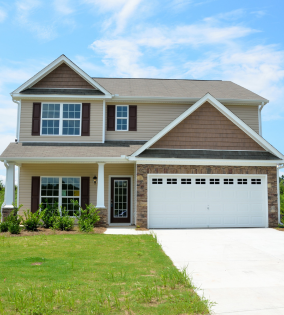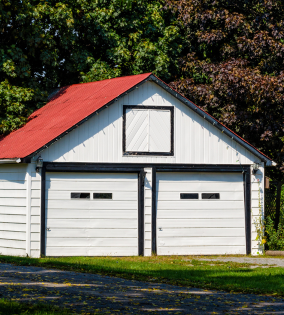- Home
- Government
- Departments
- Planning & Development
- Development & Building Permits
- Residential Development
Residential Development
Dwellings 
Any building to be used as a dwelling (house) requires a development permit. This means any building that contains a kitchen, sleeping areas, and a bathroom, and is capable of year-round occupancy.
Dwellings do not include Recreational Units or detached temporary accommodation (i.e. guest cabins, yurts, etc.) in a campground.
Types of Dwellings Include:
- Detached Dwelling: The building is constructed on-site.
- Move-In Dwelling: Previously occupied detached or modular dwelling that is transported in whole or in parts to a new building site. Moved in dwellings do not include recreational units, park models, new modular homes, or mobile homes.
- Modular Dwelling: The structure must have CSA-A277 certification as a ‘Modular’ and cannot be built to CSA-Z240 standards and must be set on a subgrade foundation, such as a grade beam, with a heated crawl space or basement. Modular Dwellings include Ready to Move Homes (R.T.M) but shall not include detached dwellings, mobile dwellings, or moved in dwellings.
- Mobile Dwelling: The structure must have CSA-A277 certification as a ‘Mobile’ and must be constructed in accordance with the CSA-Z240 standards for foundations such as blocking and steel piles with an enclosed and insulated joist space. A mobile dwelling includes manufactured homes but does not include park models, recreational units, modular dwellings, detached dwellings, or moved in dwellings.
Note: Per Section 9.6.3 (c) of the Land Use Bylaw, a security deposit of $5,000 is required for previously used or occupied dwellings at the time of submitting your development permit application. This security ensures that the requirements outlined in Sections 9.6.1 and 9.6.2 are completed to the satisfaction of the Development Authority. Once proof of completion is received, the deposit will be refunded in full to the applicant.
Accessory Buildings
An accessory building is a separate structure on a property, like a shed or detached garage, that isn’t attached to the main dwelling (house).
- If the building is smaller than 14 m² (150 ft²), follows all rules for setbacks, lot coverage, and height for your district, you don’t need a development permit.
- For any building 14 m² (150 ft²) or larger, or if it doesn’t meet the rules (e.g., too close to a property line), you’ll need a development permit.
This applies whether the building has a permanent foundation or is movable (e.g., on skids).
Note: Farm buildings used exclusively for agricultural purposes do not require a development permit but must follow the setback requirements specified for your district.
Typical Residential Accessory Buildings include, but are not limited to:
- Detached Garages
- Sheds
- Shops
- Gazebos
- Sea-Can Containers
- Do you have a restrictive covenant?
-
If a restrictive covenant is registered on your Certificate of Title, you are legally required to comply with it. Restrictive covenants may include conditions or limitations that go beyond the requirements of the County’s Land Use Bylaw.
It is the responsibility of the applicant and/or landowner to review the Certificate of Title and identify any encumbrances, including restrictive covenants, caveats, or easements. If you are unsure whether a restrictive covenant applies to your property or would like to obtain a copy, you can do so through any Alberta registry office.
Please note that the issuance of a development permit does not supersede, invalidate, or grant approval to contravene any encumbrance registered on the Certificate of Title.
- Where can I get/submit a development permit application?
-
Development Permit applications can be obtained and then submitted three ways:
- By email – request an application or submit the application to wpermits.
- The County office - 243019A Highway 13 (southside of Highway 13 across from Reynolds Alberta Museum entrance)
- By regular mail - Box 6960, Wetaskiwin, AB T9A 2G5
Planning and Development Applications
- What do I need to submit with my development permit application?
-
The required documents may vary depending on what the proposed development is; however, majority of development permit applications require:
- Completed development permit application form,
- Drawings (blueprints),
- Floor plan,
- CSA Certification for all Mobile and Modular Homes,
- Site plan, and
- All application fee(s) to be paid in full.
Applications are NOT considered complete until ALL of the required information and fees have been provided. An incomplete application form and/or illegible supporting information may result in the application being returned to the applicant. Please refer to the checklist on the back of the application. Fees will be determined after application is considered complete.
Click here to contact the Planning and Development department for any questions regarding the application or application process.
Site Plan Example:
Examples of drawings/measurements required:
ShedGarage House
Determine Your Property's District and Setback Requirements
To find your property’s district, use the County's online digital map. Locate your property on the map and click on it. A pop-up window will show details such as zoning, lot area, and more. By clicking on the zoning code, you can view the district regulations, including required setbacks for buildings (front, side, and rear property lines) and height limits.
The map also has features to help you check your property dimensions and setbacks to ensure your proposed building location meets the requirements.
Further information on how to use the interactive map can be found here.
Except for lands in the Agricultural District under the Intermunicipal Development Plan Overlay, a development permit is not required for the following types of development so long as they conform to all other relevant provisions of the Land Use Bylaw including setbacks, site coverage, height, etc.:
This includes, but is not limited to:
- Minor Home Occupation
- Day Homes
- Minor renovations to a building that does not change the use, size or shape of the building
- Decks under 0.6 m (2 ft) in height
- Gates, fences, golf netting, walls or other means of enclosures under 1.8 m (6 ft) in height
- Demolition of a structure where the material is deposited in legally authorized landfills
- Lot grading, including dugout and ponds, except where grading will significantly affect the existing lot drainage and natural drainage pattern and will create off-site impacts or be in contravention of a previous study or approval such as a Storm Water Management Plan or Area Structure Plan.
Please refer to Section 3.2 of the Land Use Bylaw for the full list of Development Not Requiring a Development Permit.
An Agricultural (Farm) building does not require a development permit, if it meets the setback requirements of the zoning district the land is located and is not in the Agricultural/Intermunicipal Development Plan (A/ID) District around the City of Wetaskiwin.
Types of Agricultural (Farm) buildings include, but are not limited to:
- Livestock Shelters
- Barns and outbuildings storing agricultural products and farm equipment
- Silos
- Granaries
Fencing in the Agricultural District or for agriculture purposes does not require a development permit. However, fences on corner lots must comply with the requirements in Section 7.3 - Access and Approaches in the Land Use Bylaw.
Developments on a Farm that Require a Development Permit:
- Dwellings (House)
- Residential accessory buildings (i.e. Garage, Shed, Gazebo, etc.)
- Discretionary uses under the applicable agricultural zoning district
- Farm buildings within the City and County of Wetaskiwin Intermunicipal Development Plan
- What is an Off-Site Sewer Levy and why do I have to pay it?
-
The Off-Site Bylaws 2007/38 and 2008/42, requires that development that takes place in the designated area be required to pay a one time off-site levy fee in the amount of $2,034.00. The object of this Bylaw is for the collection of funds to pay for the capital cost of the new and/or expanded facilities for the treatment, movement, or disposal of sanitary sewage. The Levy must be paid prior to the issuance of a Development Permit.
Any development located within the pink shaded area below is subject to the Off-Site Levy payment.
If a lot is a minimum of one (1) acre or larger, no sewer service is provided, and sewage is to be treated privately on the property, an inspection report from Superior Safety Codes Inc. must be obtained. If a satisfactory sewage inspection report is signed-off by Superior Safety Codes Inc., the Off-Site Levy payment may be refunded in full.
- Why do I have to pay the Off-Site Sewer Levy fee if I already pay for utility services?
-
The Off-Site Sewer Levy is separate from utility services. While you may pay for utility services, the Off-Site Sewer Levy is specifically designated to contribute to the expansion and maintenance of the Alder Flats and Mulhurst Lagoon, where sewage is transported. This fee supports the capital costs associated with the development and upkeep of the lagoon infrastructure, ensuring it can effectively manage and process sewage.
- How do I know if the Off-Site Sewer Levy fee has been paid on my property?
-
To verify the status of the Off-site Sewer Levy payment, you can reach out to the Planning and Development department either by email or by calling 780-352-3321. This allows you to confirm whether the Off-site Sewer Levy for your property has been paid or is still outstanding.
- What if I’m treating sewage on my property and it’s not being treated at the Lagoon?
-
If you have a lot that is one (1) acre or more, no sewer service is provided, and you are treating sewage waste on your private property, you must obtain a Sewage Inspection Report from Superior Safety Codes Inc. This report should outline the type of private system used for sewage treatment and certify that the system has been installed following the Safety Codes Act.
If a satisfactory sewage inspection report is signed-off by Superior Safety Codes Inc. the Off-Site Sewer Levy payment may be refunded in full to the Applicant.
- If the structure I’m developing does not have plumbing inside, do I still need to pay the Off-Site Sewer Levy?
-
Yes, the Off-site Sewer Levy is for any new or redevelopment of a structure.